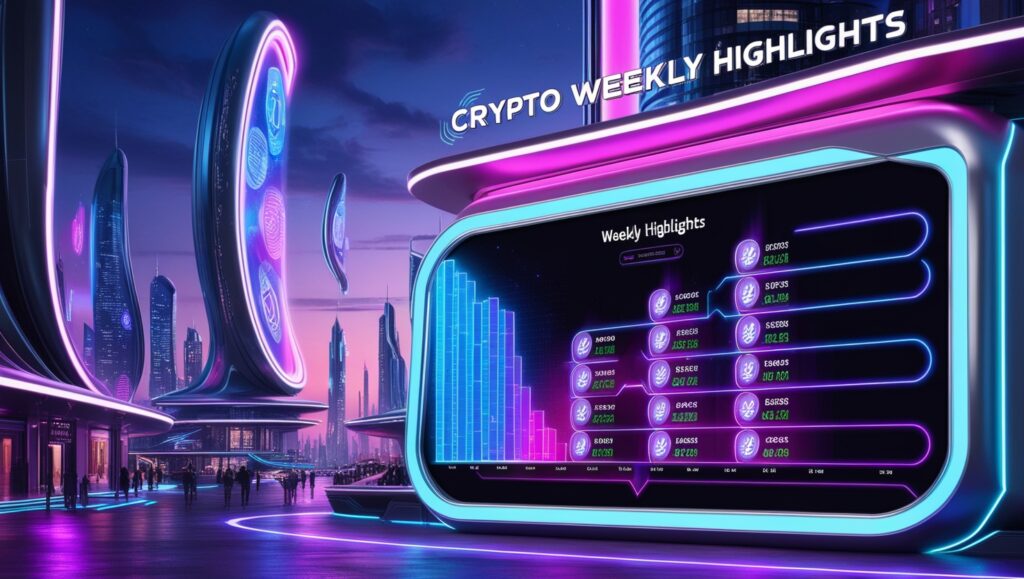According to Deloitte’s annual predictions for technology, media, and telecom, the coming year will bring AI tools for chip design, ad-supported video streams, and a swarm of satellites in orbit.
According to Deloitte’s estimates, the big streaming services that were previously ad-free will start to offer less expensive or free versions with advertising. The company anticipates significant M&A activity to continue in 2023 in the tech, media, gaming, and telecom sectors.
Additionally, it stated that streamers are entering the live sports market in an effort to convert viewers into subscribers. Moving on to deep technology, the corporation also said that chips are becoming more complex and that design skill is becoming more limited. As a result, AI tools might save the day. (This trend has been present in chip design tools for many years, but it is now gaining momentum.)
According to the Deloitte Technology, Media & Telecommunications 2023 Predictions report, 5,000 satellites in orbit may connect the world with data, but controlling space traffic is becoming more difficult.
This year, talk has been dominated by increasing inflation and interest rates, sluggish economies, and declining consumer confidence, according to Deloitte. Additionally, as many targets are substantially cheaper than they were a year ago, economic conditions are fueling a comeback in IT divestitures and a rise in M&A activity surrounding gaming.
The paper focuses on the significant roles that chips, 5G, AVOD (advertising video on demand), artificial intelligence (AI), and 5G could play in our hyperconnected future.
Inflationary pressures, supply chain concerns, and other global events continue to create unpredictability, which is highlighted by this year’s TMT predictions, according to Kevin Westcott, vice chair at Deloitte U.S. worldwide Telecommunications, Media and entertainment (TME) practise leader. As a result, consumers are seeking more affordable means of communication, entertainment, and productivity, while businesses are searching for effective means of innovation in order to compete, stand out from the competition, and increase revenue. Our analysis of these new patterns ought to help firms make decisions as they make future plans and work to satisfy their clients’ needs.
On the strength of consolidation, portfolio plays, and game technology, gaming M&A is expanding.
According to Deloitte, the number of mergers and acquisitions involving video game companies will continue to rise by about 25% in 2023, which is a somewhat slower rate than the projected 30% quarterly growth of 2022. Many anticipated titles that were postponed in 2022 are now expected to be released in the upcoming year thanks to innovations in video game services, experiences, and business models. Console supply chains are also becoming more flexible to accommodate pent-up demand for next-gen experiences.
According to Deloitte, the VR market will produce $7 billion in revenue globally in 2023, up from $4.7 billion in 2022. 90% of that revenue will probably come from headset kit sales as VR becomes more and more popular; 14 million units, at an average of $450 each, are anticipated to be sold in 2023. The remaining portion should be primarily made up of VR content, primarily games but also some business applications, with potential sales of just over $1 billion.
However, VR still has a long way to go before it catches up to other digital gadgets in terms of numbers. Nearly five billion people worldwide use smartphones alone, and many more use PCs, tablets, and TVs. By the end of 2023, even smart speakers, a relatively recent invention that debuted in 2017, will probably have more than 500 million units installed worldwide. VR will therefore continue to be a rather specialised technology for the time being, with only 22 million active installed bases in 2023.
Hanish Patel, a managing director at Deloitte who specializes in gaming, stated in an interview with GamesBeat that game hardware and VR hardware makers may be able to release more products in 2023 now that the economic slump has somewhat lessened component shortages.
This development should be fueled by advancements in the underlying technologies, including electricity, displays, and audio. In order to provide a true, immersive experience, headsets should be able to deliver greater frame rates, higher-resolution screens, and improved spatial audio by the end of the year.
Patel added, He firmly believes that the speed at which new technologies, innovation, and acceptance are taking place is creating a tremendously exciting and rapid period.
Activision Blizzard is being acquired by Microsoft for $68.5 billion, and Patel said that large acquisitions tend to spur further deals. The fact that some companies’ prices are declining could spur additional mergers and acquisitions.
That will still lead to a considerable amount of deal flow, according to Patel. Businesses are making the most of their intellectual property. There will still be some more consolidation for that to happen.
It’s noteworthy to note that in the report’s gaming section, Deloitte barely mentioned the metaverse or blockchain gaming. But Patel noted that the company has been keeping an eye on those sectors’ growth for some time. Blockchain gaming’s expansion may be hampered by the cryptocurrency market’s downturn and its “rollercoaster year,” he said. Despite the fact that gaming is an entry point for the metaverse, Deloitte made little mention of it in their research. Patel however asserted that he expects the metaverse and Web3 technologies in gaming to continue growing.
Regarding growth in 2023, Patel claimed that he could already see signs of relief from the supply chain crunch that had been slowing the console gaming market. This holiday season might make or break console sales for gaming in the long run, or it could reveal whether there is still unmet demand that could be satisfied now that consoles are more widely available.
According to them, gaming’s fundamentals are sound and have been for a very long time, Patel said.
AVOD usage is rising as streaming services expand globally
Deloitte forecasts the addition of AVOD (advertising video on demand) choices to popular streaming services that have previously been ad-free. While ad-free subscriptions won’t disappear anytime soon, Deloitte predicts that by the end of 2023, the majority of developed market subscription video-on-demand providers will likely introduce new ad-funded tiers. Half of these providers will probably also have introduced a free, ad-supported streaming TV service by the end of 2024. (FAST). Additionally, Deloitte predicts that by 2030, most subscriptions to internet video services would be largely or entirely supported by advertising.
The turnover rate for streaming services in the US was 37%, according to recent study. This calls for media and entertainment companies to constantly seek out new revenue-generating opportunities while appealing to budget-conscious consumers who have an increasing appetite for more compelling and diverse content, according to a statement from Jana Arbanas, vice chair of Deloitte and leader of the U.S. telecom, media, and entertainment sector. By providing consumers with more options that fit within their budgets and giving streaming companies more opportunity for growth by partnering with eager advertisers, advertising video on demand, for instance, can meet both objectives. This is in addition to the longer-lasting relationship with consumers.
Future chips will be designed by semiconductor companies using AI and high-power materials
AI is being used by semiconductor manufacturers to create chips more quickly, affordably, and effectively. According to Deloitte, the top semiconductor businesses in the world may spend $300 million on internal and external AI tools for designing chips in 2023. Over the following four years, that amount may increase by 20% yearly to reach $500 million in 2026. The effects of AI will probably be much more widespread than the money spent on AI design tools.
They might make it possible for chipmakers to go beyond the bounds of Moore’s Law, save time and money, and even bring outdated chip designs. Gordon Moore, the former chairman of Intel, projected in 1965 that a chip’s component count might double about every two years. That was the case for many years, which led to significant technological advancements. According to a number of chip industry leaders, manufacturing’s decades-long easy technological breakthroughs have been used up.
The lack of semiconductors has shown that producing chips more quickly and effectively is necessary to meet demand, according to a statement from Paul Silverglate, vice chair of Deloitte and head of the US technology sector. “Artificial intelligence-aided design can be utilized to fill this demand, improve older circuits by upgrading to more advanced process nodes, and even assist close the skill gap in the chip industry. Semiconductor businesses may get over the difficulties in the current market and concentrate more on the future by using AI to make chip creation considerably faster.
High-power materials-based supercharged semiconductors are pushing chip development to a new frontier. Gallium nitride and silicon carbide, which primarily replace silicon, are well suited for the higher voltages, power levels, and resilience required for increasingly widespread applications such as electric vehicle batteries, incredibly effective chargers for consumer electronics, potent solar panels, cutting-edge military applications, space technology, and nuclear energy.
According to Deloitte, sales of chips containing high-power semiconductor materials might reach $3.3 billion in 2023, an increase of over 40% from 2022. It is anticipated that sales of these chips, collectively referred to as power compound semiconductors, will increase to about 60% in 2024 and may surpass US$5 billion.
A crowded sky will require broadband satellites to navigate through
Deloitte estimates that by the end of 2023, there may be more than 6,000 broadband satellites in low-Earth orbit (LEO) as a result of an increase in commercial data satellite deployments aimed at bringing high-speed internet to every region of the globe. They could combine to form two functional constellations that could deliver high-speed internet to about a million customers anywhere on the globe, regardless of how remote.
Amazon wants to launch 3,236 satellites into orbit, while Starlink alone has more than 2,600 satellites in orbit.
Seven to ten competing networks with a total of 40,000–50,000 satellites serving more than 10 million end customers could be operational by 2030 if every company currently seeking to create a LEO constellation is successful. In order to maintain the commons of space, it would probably be necessary to expand industrial cooperation and develop new tools for situational awareness in space, in-orbit satellite maintenance, and debris removal.
Deloitte anticipates strong demand for transistors that have been radiation-hardened as one of the effects.
Deloitte’s other 2023 TMT projections include:
A lot of firms want to achieve net zero, and the technology sector is strongly committed. Tech companies are working harder and quicker to combat climate change, and they are 13% more likely than non-tech companies to aim for net zero by 2030, according to a study of the Deloitte CxO Sustainability Survey.
5G standalone (SA) networks are poised to drive disruptive transformation that might make earlier advancements in wireless technology (2G/3G/4G) seem incremental by introducing virtualized, cloud-centric features. By the end of 2023, at least 200 mobile network operators (MNOs) are predicted to have invested in 5G standalone networks, up from more than 100 in 2022. These investments could be made in the form of experiments, real rollouts, or planned deployments. Deloitte anticipates seeing $99 5G phones.
The reality of virtual production is also growing. By reducing production timelines, enhancing flexibility, and bringing real-time computer-generated images and visual effects out of post-production and onto actual sets, virtual production technologies and methods are revolutionising film and cinema. According to Deloitte, the market for virtual production tools will reach $2.2 billion in 2023, up from an expected $1.8 billion in 2022. This is a 20% increase.
Social shopping trends surpass $1 trillion annually
With more than two billion consumers purchasing through social media in the past year, Deloitte projects that global expenditure on products and services will reach $1 trillion in 2023, expanding 25% yearly. Market growth for social commerce is outpacing that of conventional e-commerce. Generation Z and Millennial respondents to a Deloitte survey are more likely than Gen X respondents to say that social media influencers have an impact on their purchasing decisions.
Also competing for enterprise investments in edge services and technologies that make computing faster, safer, and less expensive are cloud, telco, equipment, and platform companies. According to Deloitte, the enterprise market for edge computing will increase at a rate of 22% in 2023, outpacing the 6% growth in overall enterprise IT spending and the 4% growth in spending on enterprise networking equipment. As the market matures, the majority of this growth should shift from initial hardware investments to those in software and services.









